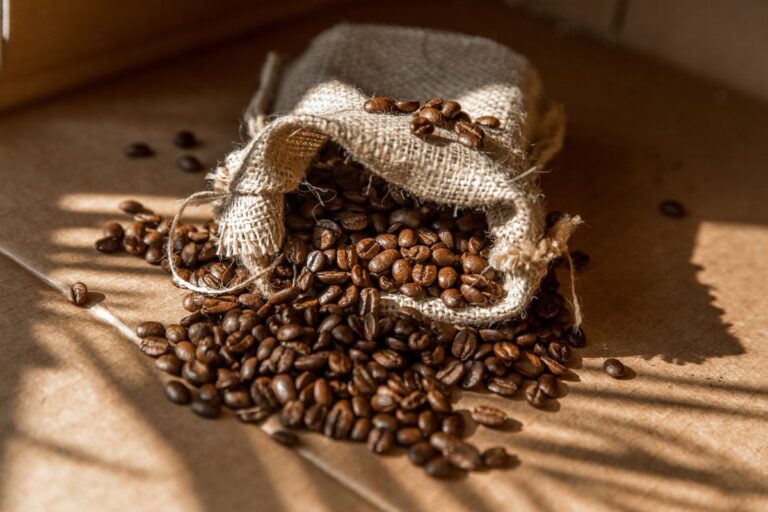Are you looking for the most fascinating fair trade coffee facts? I got you!
Fair trade coffee has become a household name in the past years.
Many coffee lovers, me included, try our best to purchase coffee with the “fairtrade” tag.
By Lilian.
Published on 2022.04.09
Affiliate disclosure
This page may contain affiliate links – we may earn a small commission when you make a purchase through these links. This is at no extra cost to you.
For me, I derive a lot of satisfaction knowing that the farmer whose coffee I consume every morning is adequately rewarded for their amazing job!
Read on to learn more about my favorite coffee – fairtrade coffee.
What’s the Origin of Fairtrade Coffee History?
Fairtrade coffee started as a response to Mexican coffee farmers’ struggles.
Well, from the 1960s to the late 80s, the International Coffee Agreement regulated the global coffee market.
According to the Fairtrade Foundation, the ICA adopted export quotas and buffer stocks to ensure reasonable and stable prices for coffee farmers.
Unfortunately, the ICA collapsed in 1989 and, as a result, coffee prices dropped to as low as 0.005 per pound!
In order to protect farmers, the “Fairtrade” label was launched to identify coffees whose farmers were adequately compensated.
Here’s everything you need to know about fair trade coffee.
10 Facts About Fair Trade Coffee
Most of the World’s Fairtrade Coffee Comes From Latin America
According to a study conducted by Christopher M Bacon and Robert Rice, 80% of the world’s fair trade coffee is from Latin America.
The coffee grows on 2.6-hectare farms, on average.
Columbia Takes the Lead in Fairtrade Coffee Production
Fairtrade Foundation identifies Columbia as the leading fairtrade coffee-producing country not only in Latin America but also around the world!
In fact, over 70,000 Colombian coffee growers sell their coffee as fairtrade.
Most Fairtrade Coffee is Produced by Small Scale Farmers
You’d think that it grows on extensive ranches, right? Not at all.
Fairtrade International mentions that 70-80% of the world’s coffee is produced by 25 million small scale farmers.
Because of the nature of small-scale farming, small scale farmers are prone to disadvantages such as limited access to the global market.
They’re also likely to have less information about the price and quality of coffee demanded on the global market.
Most large-scale farmers are not affected by these factors, especially prices.
They can afford to lower their prices and still enjoy economies of scale.
Fairtrade Coffee is Tastier!
You don’t have to sacrifice your tastebuds for fairness. Not at all!
Fairtrade coffee tastes fantastic too!
According to the Fairtrade Foundation, fairtrade coffee won 14 Great Taste Awards at the London Coffee Festival! That’s a lot of coffee awards!
Global Gifts, an organization that deals with fairtrade gifts, confirms that fairtrade coffees have a smooth feeling, with floral and berry hints.
Who would resist such a drink?

The Average Coffee Farmer Earns Less than 10% of the Coffee’s Shelf Price
According to Kate MacDonnell, the average coffee farmer earns only 7-10% of the price displayed on the supermarket shelf!
Sad, but true…
For Every Fairtrade Coffee You Purchase, There’s a Premium for the Farmers!
Fairtrade America puts it at $0.20 per pound of fairtrade coffee.
The premium is invested in business and/or community projects chosen by farmers and workers.
A significant portion also goes towards boosting the quality and production of coffee.
Well, this is another reason you shouldn’t roll your eyes at that fairtrade coffee packet at the store!
Fairtrade Coffee Grows in the Shade!
Definitely not all, but most of the coffee certified as Fair Trade in the U.S grows in the shade.
Café Campesino confirms that shade-grown coffee tastes better!
Because of the shade, the coffee beans take longer to ripen. The end result is coffee with a more complex taste, and more flavorful!
Fairtrade Coffee Supports Women Coffee Farmers
Fairtrade standards dictate that women enjoy equal opportunities in the coffee supply chain.
I’ll give you the example of Kenya, my second home, where women provide at least 70% of coffee farm labor.
Fairtrade set up the Growing Women in Coffee project to enable women to earn independent income by having coffee bushes transferred to women coffee farmers in the country.
The project sponsored women for training on good agricultural practices, how to increase coffee yields, how to produce green energy biogas, and much more.
When you empower a woman, you empower a nation. Right?
Fairtrade Coffee is less than 5% of the Global Market
Again, this is sad but true.
In fact, Fairtrade America puts it as 2%.
It’s unfortunate that most governments around the world are not quick to adopt strategies to boost the production of fairtrade coffee.
Sometimes, all it takes is a simple drop in coffee tax for fairtrade coffee…
Fairtrade Coffee Guarantees That Coffee Will Still be Around in the Future!
Many coffee farmers around the world still live in poverty.
Take Kenya as an example. Many coffee workers and farmers cannot afford a decent house. Nor can they take their children to school.
They’re uprooting the coffee trees and replacing them with more promising cash crops. Sadly, this is the situation in many other coffee-producing countries.
According to Kate Lewis, every time you drink a cup of fairtrade coffee, you have the solid assurance that the farmer who grew the coffee beans got a fairer deal.
You can also be sure that they’re being supported to build a brighter future, which means they’ll keep growing coffee and our generations will enjoy this majestic drink too!
We all know that coffee originated from Africa, but:
Do they Produce Fair Trade Coffee in Africa?
Absolutely.
Kenyan fairtrade coffee is top-notch, very tasteful coffee.
Other African countries that produce fairtrade coffee include:
- Ethiopia
- Uganda
- Tanzania
- Rwanda
- Malawi
- Zambia
- DRC
Finally, let’s see how we can help coffee farmers.
Here’s How to Help Coffee Farmers Keep On (Besides Buying Fairtrade…)
According to Food For The Hungry, as much as fairtrade is good for farmers, it cannot improve coffee farmers’ livelihood.
I concur with that.
Because at the end of the day, farmers only get 10% of the coffee’s market price.
Then, what should we do?
We still need our daily brews, right?
Techno Serve suggests buying coffee from small coffee roasters. Many of them are involved in the farming process!
Choosing local coffee shops as opposed to large chains is a great idea too!
There’s a high probability that the shop owner has a direct relationship with the roaster and farmers!
As a coffee lover, you can also invest forward by donating coffee tree seedlings.
By donating in organizations such as Food for the Hungry, you help start a thriving coffee farm for families in coffee-producing countries in Africa.
You’re literally lifting them from poverty! And, securing the future of coffee in the process!
Photos by StockSnap and Iyncoln Miller





